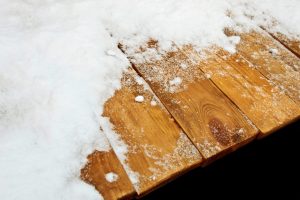
Even in the wintertime, you need to take measures to prevent your deck from becoming a hazard.
Although people rarely use their deck throughout the winter, it is still important that a homeowner does not neglect it. Injuries and accidents could occur on your deck making you liable, especially if you have been ignoring the upkeep. Winter creates conditions that will increase the likelihood of slips and falls. Here are some tips from Miles Bradley on how to prevent your deck from becoming a hazard.
Let’s start with the obvious things that will make your deck dangerous: ice and snow. While clearing the snow is easy enough, removing the ice is another story. Some people think that sprinkling grit salt is a good solution but this can be incredibly harmful to your deck. Due to composite decks having a high percentage of hardwood fibers inside, this abrasive material can mark up your deck quickly. This also applies to harsh anti-slip chemicals that can stain and discolor your deck.
Instead of relying on grit salt and harsh chemicals, the best way to remove ice is to use warm water. Just fill a bucket with warm water and pour it over the deck to melt away the ice build-up. Sometimes, there will be residue left, but that can be easily removed through cleaning. After applying the warm water, use a squeegee to remove the excess and a dry mop. Also, apply non-slip methods to ensure safety.
When it rains or snows, decks tend to become a slipping hazard. However, adding some non-slip mats and adhesive treads can be a great solution for that. These are affordable solutions to install that will prevent accidents. Treads and mats provide extra grip, reducing the chances of slipping and falling. In addition, mats come in a variety of styles allowing you to choose what is best for your deck.
Although it can be hard with winter snow and ice, you should do regular cleaning when the weather is right. While ice and snow are hazards, the biggest slipping hazard is the build-up of mildew and mold. Once the weather is good, use a hose or powerwash on a low setting to remove mold, debris, and other things that will make your deck hazardous!
 Decks are a wonderful addition to any home, providing an outdoor living area that you and your guests can enjoy. However, like any living space, the deck runs the risk of being stained. Someone could drop a drink or food. Or someone could get hurt and leave blood behind. Pets laying on the deck and leaving unpleasant stains. Even nature has its ways of staining your deck. All of these events are common and unavoidable. When these incidents happen, it’s important to tackle these stains correctly. Below are common occurrences and some tips on cleaning deck stains.
Decks are a wonderful addition to any home, providing an outdoor living area that you and your guests can enjoy. However, like any living space, the deck runs the risk of being stained. Someone could drop a drink or food. Or someone could get hurt and leave blood behind. Pets laying on the deck and leaving unpleasant stains. Even nature has its ways of staining your deck. All of these events are common and unavoidable. When these incidents happen, it’s important to tackle these stains correctly. Below are common occurrences and some tips on cleaning deck stains.
Do you still have a barbeque stain on your deck from your last party? Food can leave grease and sauce stains if they make contact with your deck. The best way to remove these types of stains is to use grease-cutting dish soap and hot water. Using dish soap, you want to rub the stain with a stiff-bristled brush. Once the stain is loosened, take a wet sponge to mop up the residue. After using the sponge, rinse the area garden hose before the area is dry.
Most people do not realize that leaves can actually stain your deck. However, if your deck is close enough and the conditions are right, it can happen. Also, nearby trees can deposit sap on your deck leaving a nasty, sticky mess. First of all, let’s cover cleaning up leaf stains. All you need to clean these stains is dish detergent and warm water. You combine the dish detergent and water to create a solution that you apply to the stain. After application, let the solution sit for 15 minutes before you scrub and rinse. You also can use an oxygen bleach solution if the stain does not come out.
When trying to remove tree sap, you are going to need a scrub brush, Murphy oil soap, and water. First, you will need to apply the oil soap to soften the sap residue. Let the soap sit for 15 minutes before scrubbing the area with a brush and rinse.
Over time, mildew and mold can stain your deck. Keeping it on your deck is a health hazard, so cleaning these stains are a priority. There are multiple items that you need to clean mildew and mold. These items include:
Before you can remove the stain, you have to clean the surface with the commercial deck cleaner. If you are using a liquid deck cleaner, you can just apply it. However, if you are using powder deck cleaner, you will need to mix the powder with water. Both should be rubbed into the stain with a stiff brush or broom. After you let the solution sets, brush the area before hosing it down with water.
There are plenty of other stains that your deck can suffer. However, the best way to fight against stains is to prevent them. When building your deck, you should choose decking materials that are resistant to stains! This includes composite decking that has inherent stain resistance or woods that are difficult to stain. If you want to build your deck to prevent staining, then you should contact Miles Bradley to see what options you have!
It is time for some spring deck cleaning! After an intense winter season, the weather is warming up. Now that the snow has melted away, you should be setting up your deck for springtime. That means cleaning up your deck and getting an inspection! However, what is the best method to clear up your outdoor space? Miles Bradley has some amazing tips to help you with your spring deck cleaning!
Over the winter, debris can build up on your deck. Dirt and grime get packed onto the planks. This can surface damage to your deck if it is not removed thoroughly. While you can sweep dirt and dust from the deck, debris can find itself between the planks and in the grooves. In order to get these components out, we recommend using a plastic putty scraper. A metal scraper can cause permanent damage to your deck. However, a plastic scraper is less traumatizing to the deck material.
You will also need to clear the potential mildew and mold that can be forming on your deck from the extensive winter. After all, the snow can prevent proper ventilation and sunlight from reaching your deck. Once you are clearing all the debris and giving it efficient sweeping, it is time to use some cleaner. However, the type of cleaner and techniques that you use can vary depending on your deck.
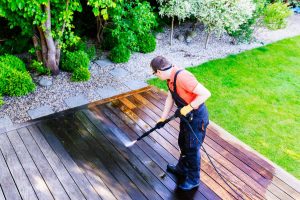
getting the initial dirt off of your outdoor space, it is time to wash it down. However, the material used for your deck will affect how you approach this process. While you can use a standard deck cleaner for wood decks, composite and PVC decking is different. For composite decks, you should find a cleaner that is formulated for composite materials. Furthermore, you should not powerwash this type of deck. The power washing process is too rough for a composite deck and can cause damage. Unlike wood, PCV material is easier to clean but lacks some of the preferred attributes of composite decks. You can use general soap and warm water to wash down your PVC deck.
One of the best ways to clean your deck’s surface is by using a stiff brush and using a circular motion to get any remaining grime from the grooves. Once you are done rinsing the deck, you should let the outdoor space dry for a couple of days before putting furniture onto the surface. This will also give you time to seal your deck (if you need to).
In some cases, you may want to get your deck inspected first. If you have a wood deck especially, it can be adversely affected by moisture.
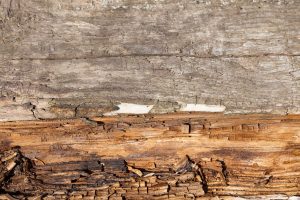 Winter can warp, rot, decay, and crack in your deck due to the weather conditions. The extent of the damage might not be obvious. However, over the years it can cause the lifespan of the deck to dwindle. A wood deck inspection will help you determine if repairing and replacing wood will meet your needs in the years to come. Depending on the age and level of wear, you may want to get a quote for low maintenance Trex deck!
Winter can warp, rot, decay, and crack in your deck due to the weather conditions. The extent of the damage might not be obvious. However, over the years it can cause the lifespan of the deck to dwindle. A wood deck inspection will help you determine if repairing and replacing wood will meet your needs in the years to come. Depending on the age and level of wear, you may want to get a quote for low maintenance Trex deck!
Get a Deck Inspection or Request a Quote on a New Deck!
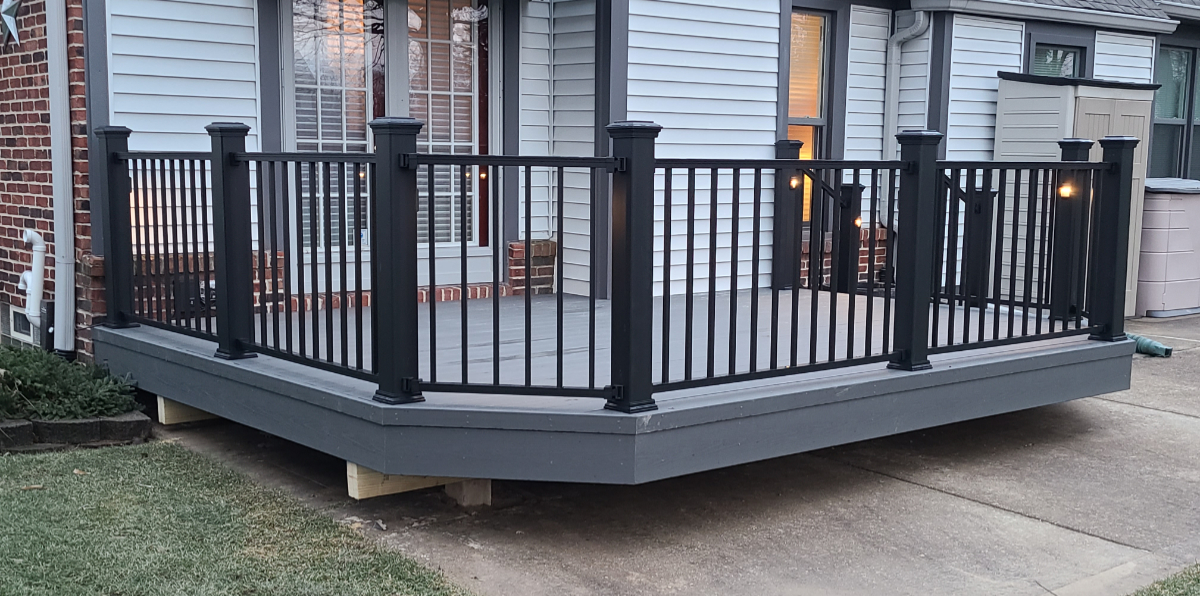
The recent Michigan snowfall has stirred up concerns for new deck owners on how to properly maintain their decks during the winter months. We often get questions about removing the snow on your deck in the winter. As your trusted deck-building company, we are happy to address any concerns that you may have about maintaining your deck in the winter.
You do not have to remove the snow from the deck. Also, we only recommend that you clear a path if the deck is connected to your house to avoid accidents.
Your deck will not collapse from the added weight of the snow. Miles Bradley builds high-quality low-maintenance decks that are built to withstand the Michigan winter. When you mix Trex decking with our great workmanship, you get a strong deck that can handle the weight of people, furniture, or snow.
Will I mess up the deck by shoveling it?
If you plan to shovel the snow off of your deck, we recommend that you use a rubber shovel. Metal shovels can possibly scratch up your deck. When shoveling, we also recommend that you use one big stroke and run the shovel down the length of the boards.
What products are recommended to remove snow and ice?
To remove snow and ice, we recommend that you use rock salt or calcium chloride.
Finally, thanks for being a valued customer of Miles Bradley. We look forward to another great year with you. If you are in need of deck repairs or a new deck this fall or winter call 248-478-8660. In addition, you can request a quote right now!
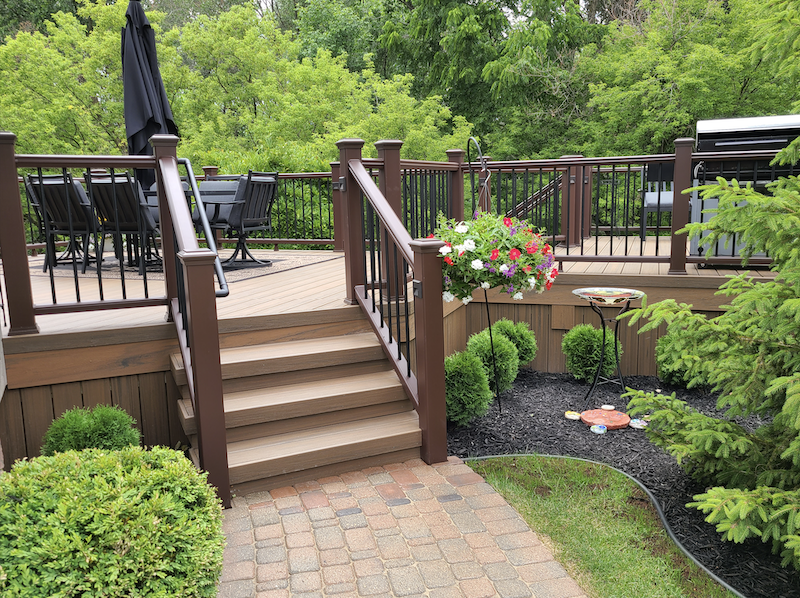
Are you worried about cleaning your composite deck before winter? Don’t, it’s easy! Although composite decking is very low maintenance, cleaning is important. An exterior deck does require a basic deck cleaning for composite decks. Ideal times to clean your composite deck are after installation and in the fall or spring. You may purchase a composite deck cleaner at your local hardware shop. If you prefer, you may use a combination of hot water and a soft-bristle brush.
Dirt and grime can build up over the spring and summer months. As a result, it is important to clean your deck before heavy rain and snow set in. This will prevent your deck from deteriorating over the winter. If you leave dirt and grime on your deck, it can accumulate and allow moisture to get locked in. As a result, your deck can suffer from structural and integral damages.
For Dirt and Debris, your deck should be sprayed with a hose to remove dirt from the surface. After you remove the loose dirt and debris from your composite deck use warm, soapy water and scrub with a soft bristle brush. This will allow you to remove the dirt and debris from the crevices of the embossing pattern. A thorough cleaning will allow your deck to be able to drain and ventilate moisture, preventing buildup.
It’s important to be careful when using Chalk Lines on your deck. You must make sure you are using the right type of chalk. High-performance chalk lines are likely to discolor a composite or PVC deck, we recommend using a dust-off marking chalk-like Irwin brand in purple you can find this at www.Irwin.com. If you accidentally snap a chalk line with permanent or bright chalk immediately scrub the line with soap and hot water to remove it.
Just like with dirt and debris, it is important to remove oil, grease, mold, or mildew from your deck. Treating your deck will prevent the accumulation of these residues, protecting your deck from permanent staining and damage.
You definitely want to try to remove any Oil, Grease, or Food stains on your composite deck before the winter comes. To remove these stains spray them off with a hose and use warm soapy water with a soft bristle brush.
Mold and Mildew are always possible. Due to it feeding on biofilm you want to remove it as soon as you see it forming. Leaving mold and mildew untreated will lead to additional deck damage by the end of winter. Owners can use simple solutions on their deck to remove mildew from your deck. Just allow the solutions to set before rinsing it off. If you happen to find mildew stains, you can use a soft bristle brush to remove them.
It is not unusual to experience snow before winter even starts, especially in Michigan. So, when you need to remove Ice and Snow from your composite deck early, you should take some extra care. If you are shoveling your deck, use a plastic snow shovel. Plastic shovels reduce the risk of damaging the surface of the deck when removing hardened snow and ice. It’s safe to use rock salt or calcium chloride to melt the snow and ice from the deck surface.
While cleaning your deck, it is the perfect time to check for rot and decay. Regardless of how much you winterized and sealed, decks age with time. Even if you have low-maintenance composite decking, looking for potential problems will save you in the long run. Some things that you should be looking for are:
Outside of visually inspecting your deck, you can run a few simple tests that expose if your deck needs maintenance. For example, if you walk the entire length deck, you will be able to feel if any boards are bouncy or creaky. In addition, you should check underneath the deck. Looking under the deck can expose any mold, mildew, wood rot, and other damage.
Cleaning your deck should be a high priority this fall!
If you need help or have any questions about cleaning your deck call us at 248-478-8660.